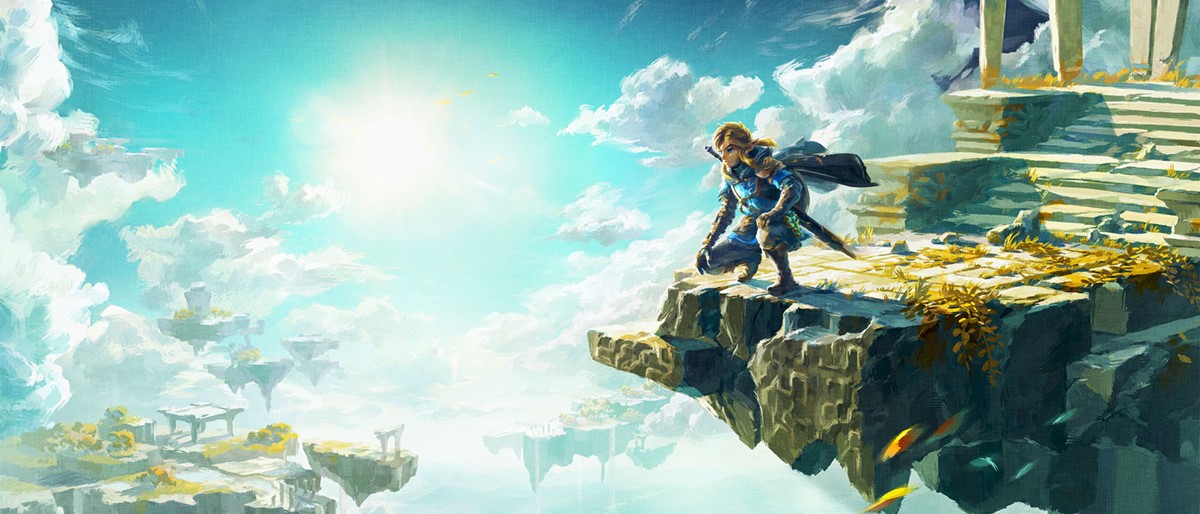Tom's Guide Verdict
The Legend of Zelda: Tears of the Kingdom lives up to the franchise's pedigree, and then some. It’s a remarkably confident sequel that refines and remixes elements of Breath of the Wild in delightfully surprising ways. The aging Switch hardware it's confined to can’t always keep pace, but that’s a minor blemish on an overall masterful experience that is essential for all Nintendo fans.
Pros
- +
Huge open-world
- +
Inventive puzzles
- +
Rewarding exploration
- +
Amazing abilities
- +
Cinematic moments
Cons
- -
Minor technical issues
Why you can trust Tom's Guide
Platforms: Nintendo Switch (reviewed)
Price: $69
Release Date: May 12, 2023
Genre: Action/adventure
How do you make a sequel to a flagship Nintendo Switch game like Breath of the Wild? Many developers would likely have focused on making everything bigger in scale, but remarkably, Nintendo has instead gone for better in The Legend of Zelda: Tears of the Kingdom.
There is plenty of connective tissue between the two games — Tears of the Kingdom is a direct sequel to Breath of the Wild — and such was the critical acclaim of BotW, Nintendo could have simply done more of the same. But instead, it builds upon the foundations of its predecessor, while switching things up in ways that are sometimes unexpected but almost always wonderful.
With the persistent reports that a Nintendo Switch 2 is on the way, there’s a very real possibility that The Legend of Zelda: Tears of the Kingdom will serve as the Switch’s swansong. If that is the case, this is the perfect note on which to end the console’s lifecycle. Let me tell you why…
Welcome (back) to Hyrule
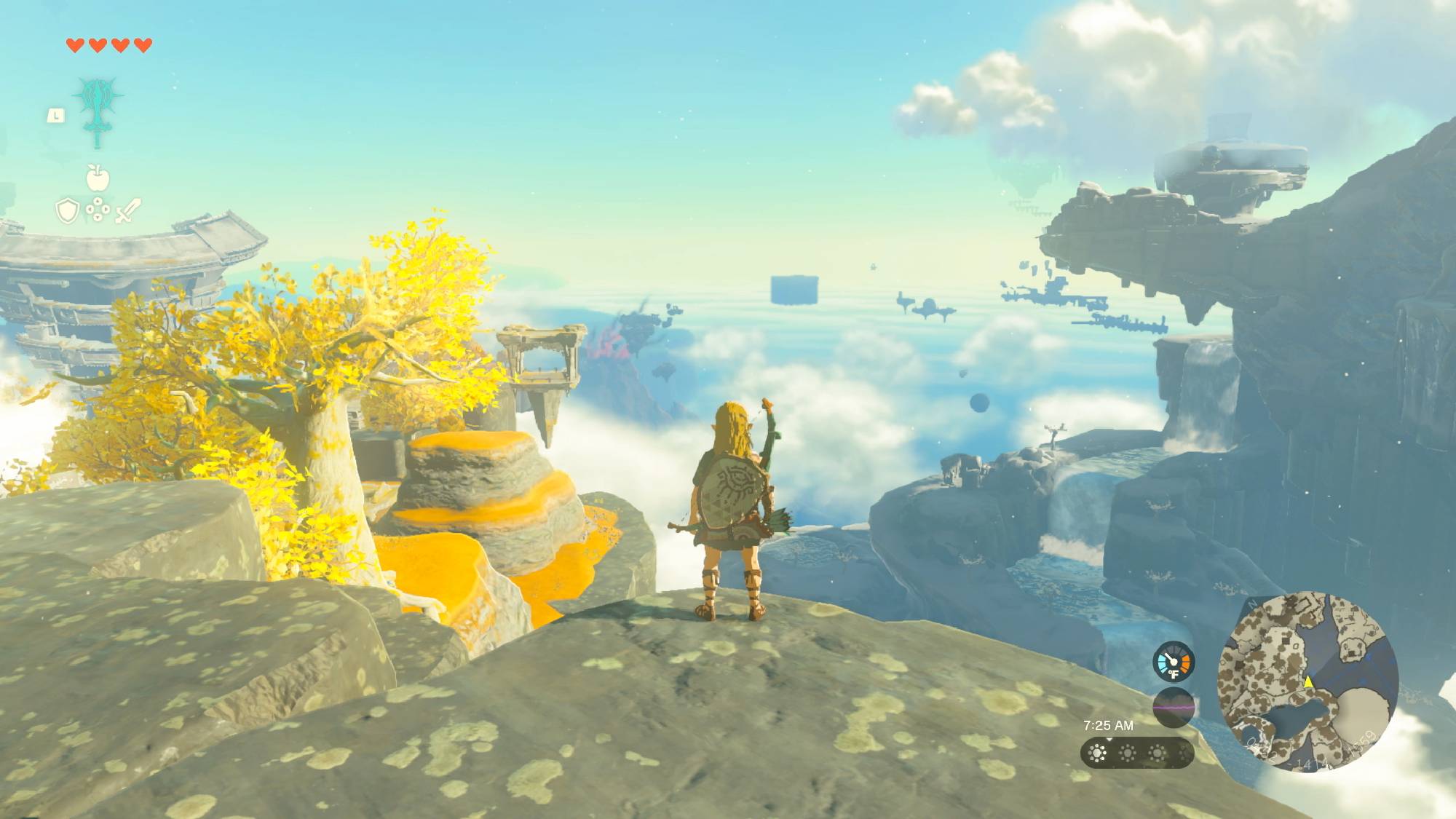
After a brief intro that sets up the story stakes, and predictably separates playable protagonist Link from the eponymous Princess Zelda, Tears of the Kingdom immediately introduces you to one of its major new additions: Sky Islands.
While the sprawling open world of Hyrule down below is roughly similar to that of Breath of the Wild, the skies represent a new playground for Link to traverse. Across the various Sky Islands, you’ll find plenty of distractions, each worthy of exploring thanks to hidden treasure chests, challenging mini-bosses and puzzle shrines that offer some of the game’s greatest rewards.
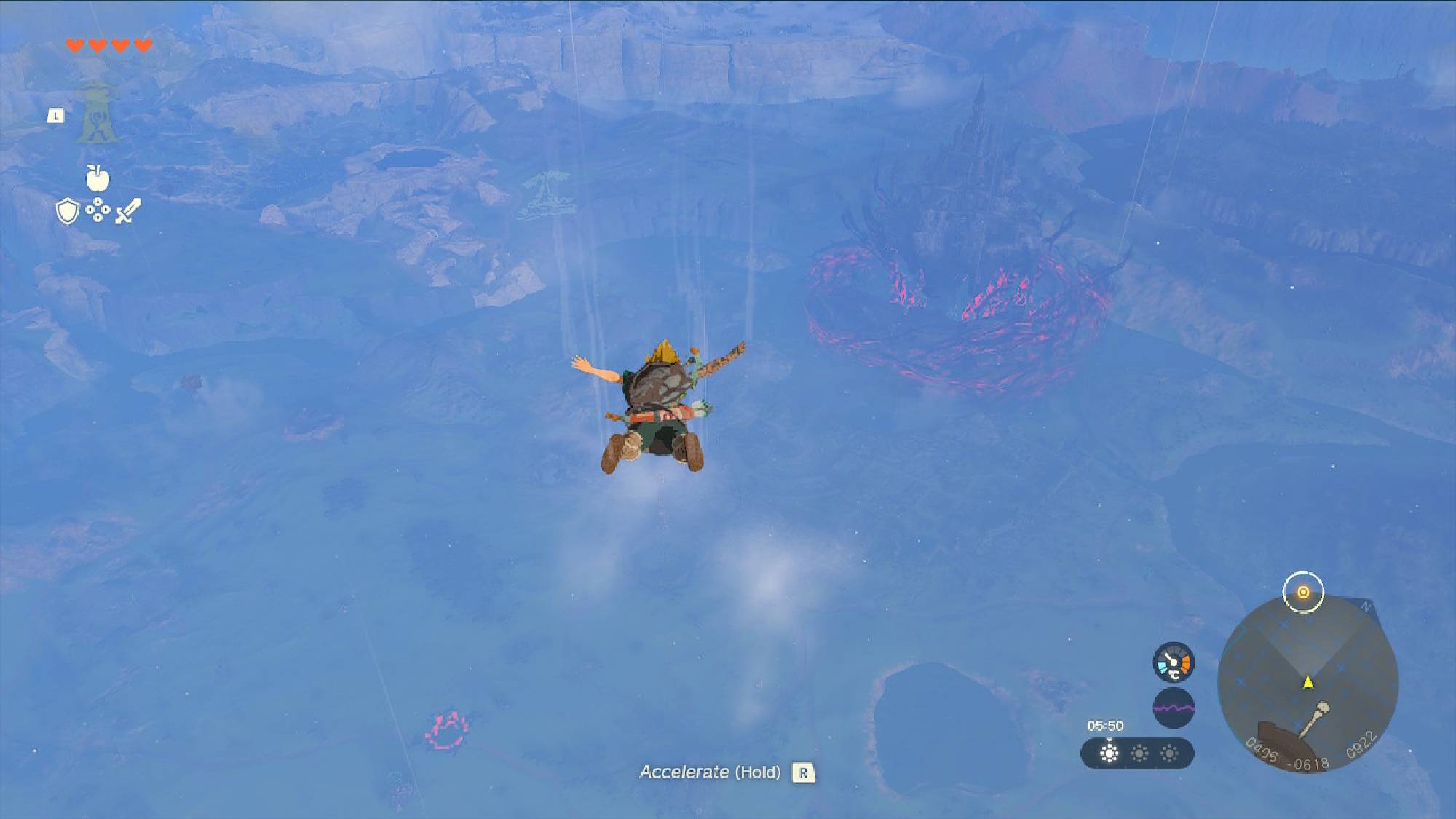
Leap off a Sky Island and you’ll float back down to solid ground, where you’ll discover even more shrines, as well as the returning Skyview Towers. You’ll need to activate these to defog your map. Like BotW, the freedom of exploration is a key pillar of Tears of the Kingdom. So, it’s a good job the thrill of wandering off in any direction and stumbling upon something unexpected is as potent as it was back in 2017.
But it’s not just the ground and sky that are yours to explore in Tears of the Kingdom. Throughout the overworld, you’ll find giant chasms encircled by a sinister-looking red goo. Your first instinct may be to back away for fear of falling in, but take the plunge and you’ll tumble into a new explorable area known as The Depths.
Get instant access to breaking news, the hottest reviews, great deals and helpful tips.

In The Depths, there’s seriously helpful loot to be found, but enemies are significantly more aggressive and inflict a status effect known as gloom. This permanently reduces your health until you recuperate back on the surface. Oh, and the area is entirely pitch-black. You must place light-giving flowers just to see where you’re going. The raised stakes and increased challenge make taking on The Depths exhilarating. Uncovering its many secrets reminded me of my adventures in Elden Ring — certainly no bad thing.
The weapons of a champion
As you explore Hyrule in its shattered but lush state, and complete various quests for the land’s inhabitants, you’ll invariably encounter foes keen to reduce Link’s supply of hearts, which as ever represent his health. From bog-standard Bokoblins to mechanical constructs, Tears of the Kingdom features no shortage of well-designed enemy types that you can easily underestimate at your peril.
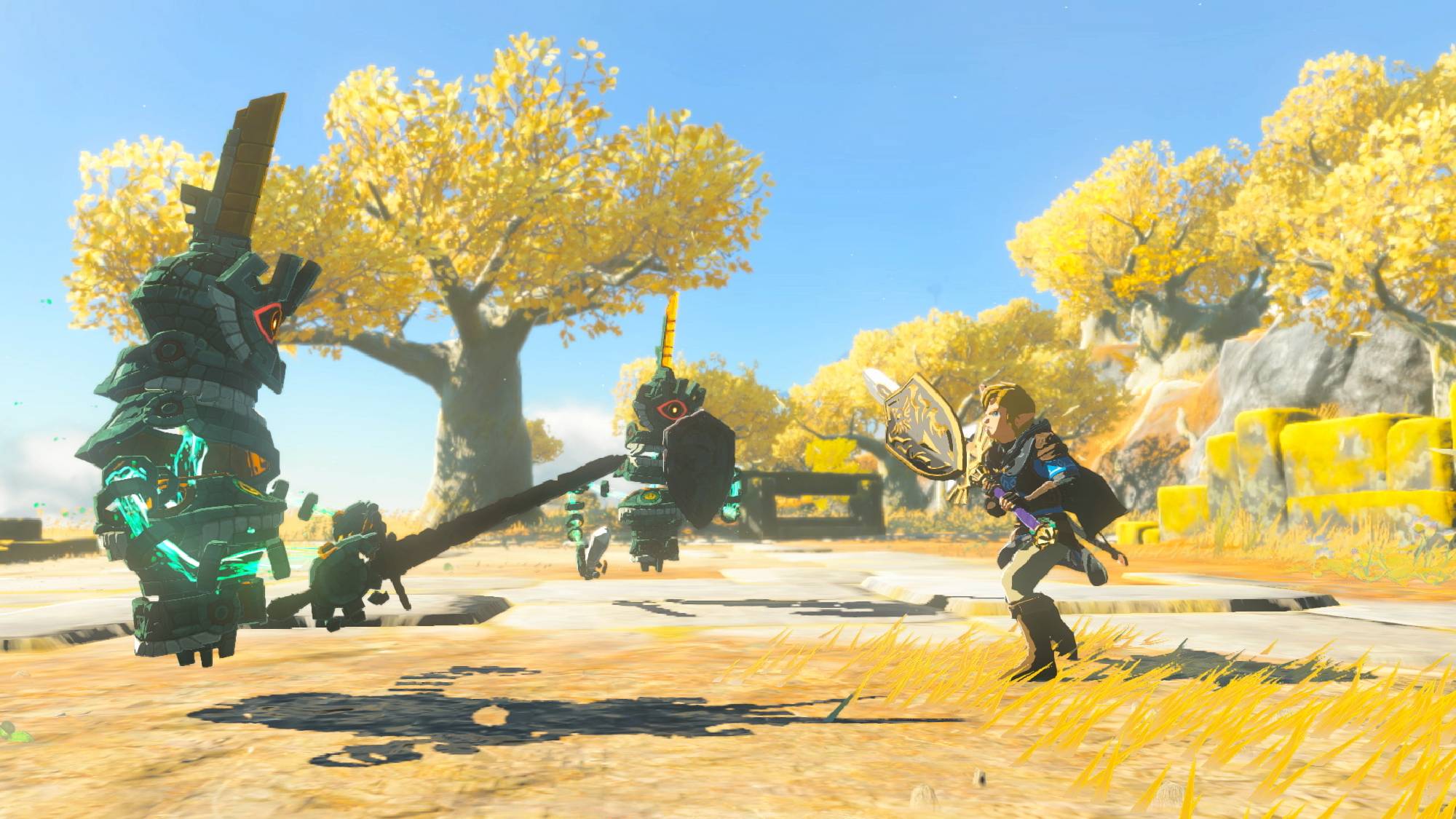
Combat is virtually unchanged from Breath of the Wild. Your primary weapon is a sword and shield combo, but you also have a bow for ranged attacks. The divisive weapon durability system has also returned. Swords will shatter after a flurry of successful slashes, and shields can only absorb a few hits before splintering. This necessitates stockpiling a large selection of weaponry so you’re never left unarmed in the face of a raging Mobilin.
While this system has its drawbacks — namely it encourages you to avoid using your best gear for fear of ‘wasting’ a premium item — it also forces you to continually experiment with a broad range of weapons instead of sticking with a reliable favorite. Plus, some of my most memorable combat encounters came when my primary weapons had all broken and I was left with no choice but to improvise with a big stick or even an oversized leaf.
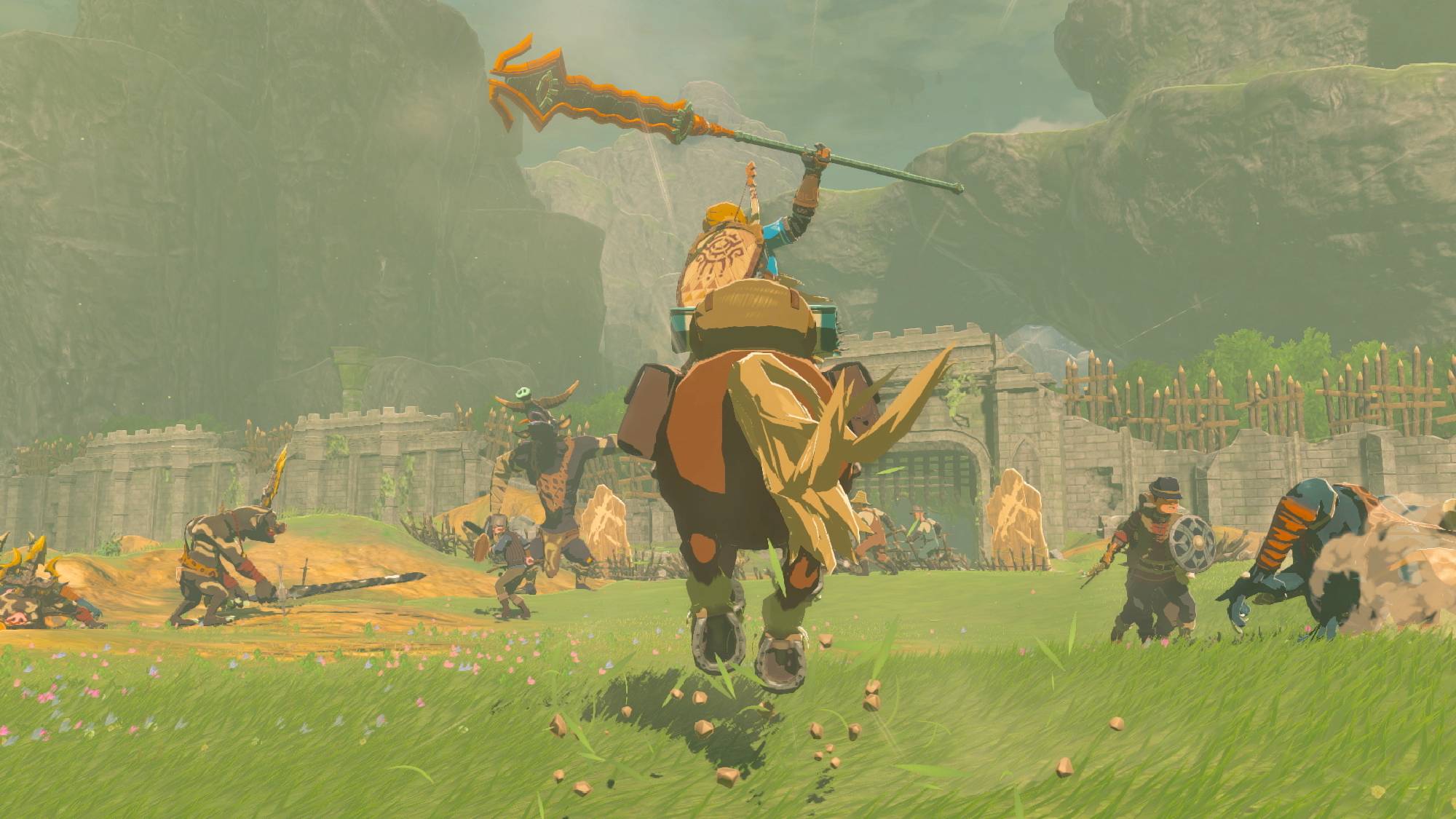
This is where the new fusing mechanic comes in handy. Link has also gained the ability to cobble together items found in the world into makeshift (yet often effective) weapons. For example, mashing together a sword and a large rock, or an arrow and a fire flower, creates more powerful armaments. The weapons this process creates are usually comical in appearance, but it adds a further element of strategy to combat and makes lower-level items more potent in late-game skirmishes.
Constructing chaos
The most significant new ability at Link’s disposal is Ultra-Hand, and it’s a real game-changer. It can be used to pick up and manipulate all manner of items, but most importantly it allows you to stick things together. For example, find a few logs and a large fan, and you can quickly construct a raft fit to sail the seas — and that’s just the very start of the creative possibilities at your fingertips.
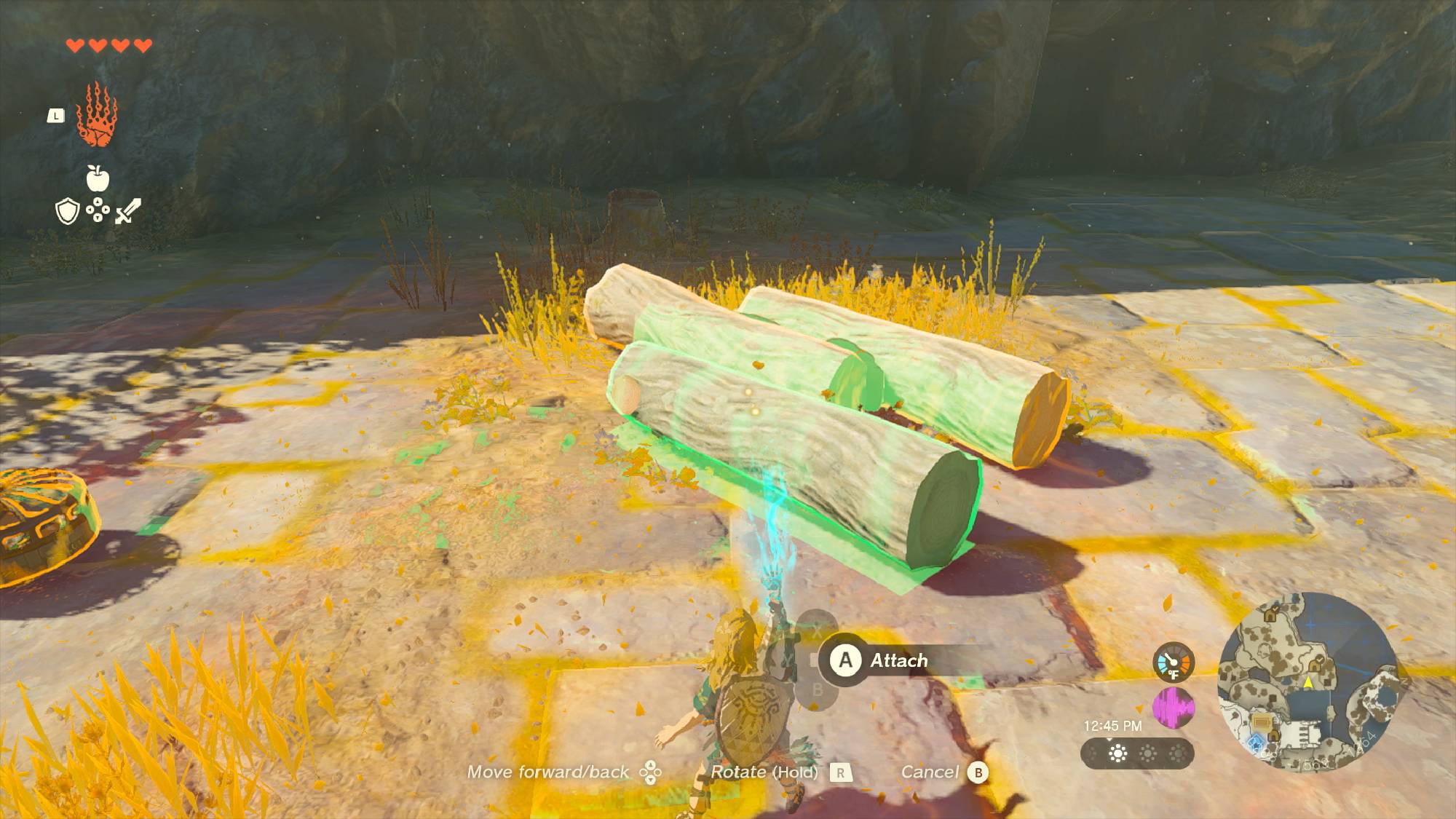
In the months since the Switch exclusive launched, the player base has proven that Ultra-Hand can be used to construct just about anything. From armored tanks to basketball hoops (yes, one player turned Tears of the Kingdom into NBA 2K). You can burn through hours just building vehicles and contraptions that range from ingenious to utterly useless - no prizes for guessing most of my builds fall into the latter category.
It’s with puzzle solving that the Ultra-Hand shines brightest. You are rarely railroaded into completing puzzles in a specific way. Instead, Tears of the Kingdom offers near-total freedom to solve them as you see fit. If you want to cross a pool of lava, you can simply build a bridge, but there’s no stopping you from creating an over-engineered pseudo-medieval hovercraft to skip across the molten rock in style; the choice is yours. This high degree of freedom to solve puzzles in inventive ways made completing the 150+ shrines my favorite part of the game.
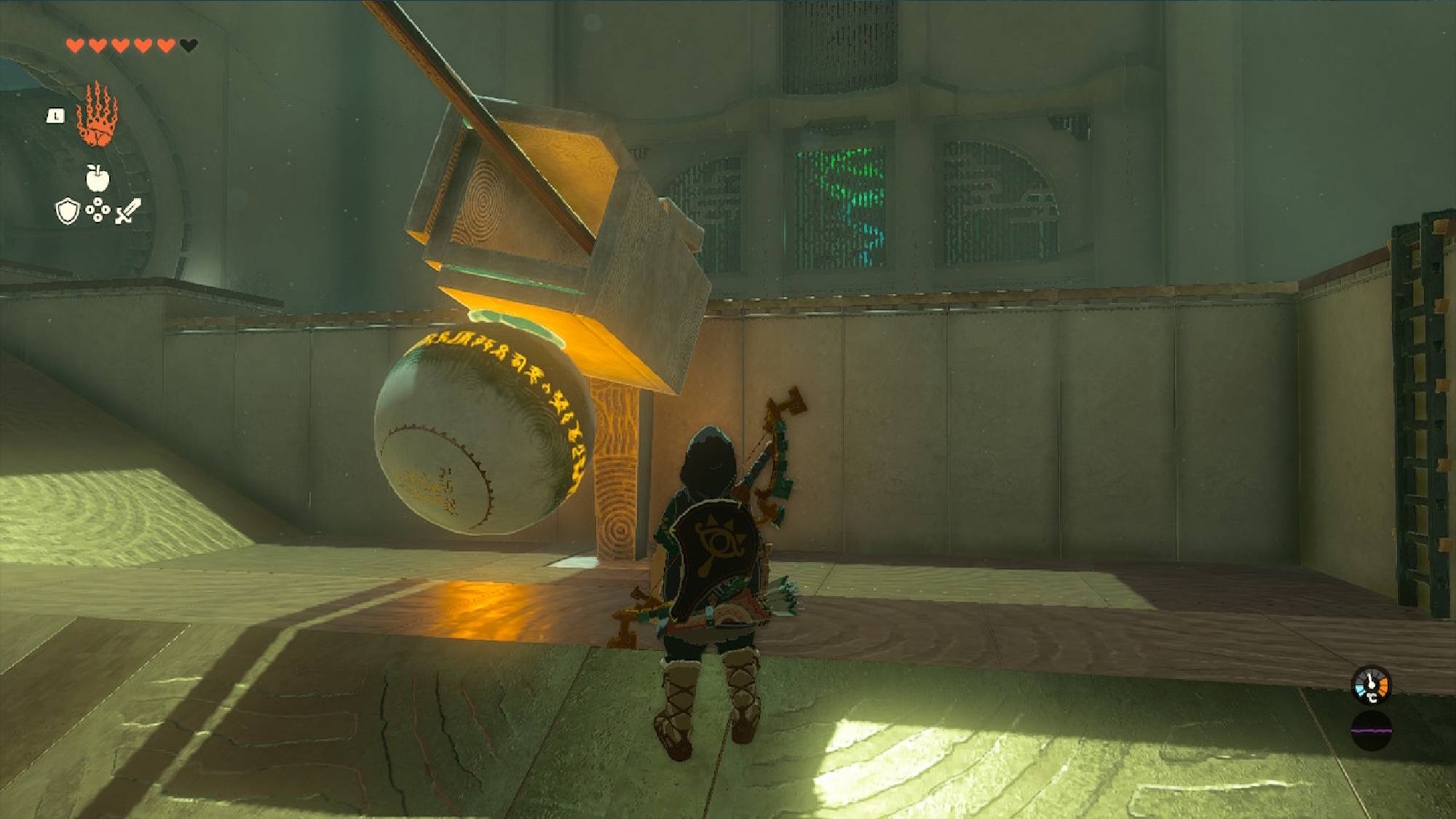
Link’s other new powers are Ascend and Recall. The former is used to travel upwards through ceilings and is especially handy when you get lost in an underground cave, while the latter allows you to rewind the movement of an object, another tool used for puzzle solving. Both are fun to experiment with but are more context-sensitive than Ultrahand or Fuse.
A tale as old as time
I wouldn’t call Tears of the Kingdom a narrative-driven game, but it’s got a cinematic quality to its main quests. The central story is simplistic but full of charm. Fortunately, the animated cutscenes stand out. Each one draws you into the world and offers a deeper insight into the characters surrounding Link. It’s a shame the iconic protagonist remains a blank slate, but that’s a franchise mainstay at this point.
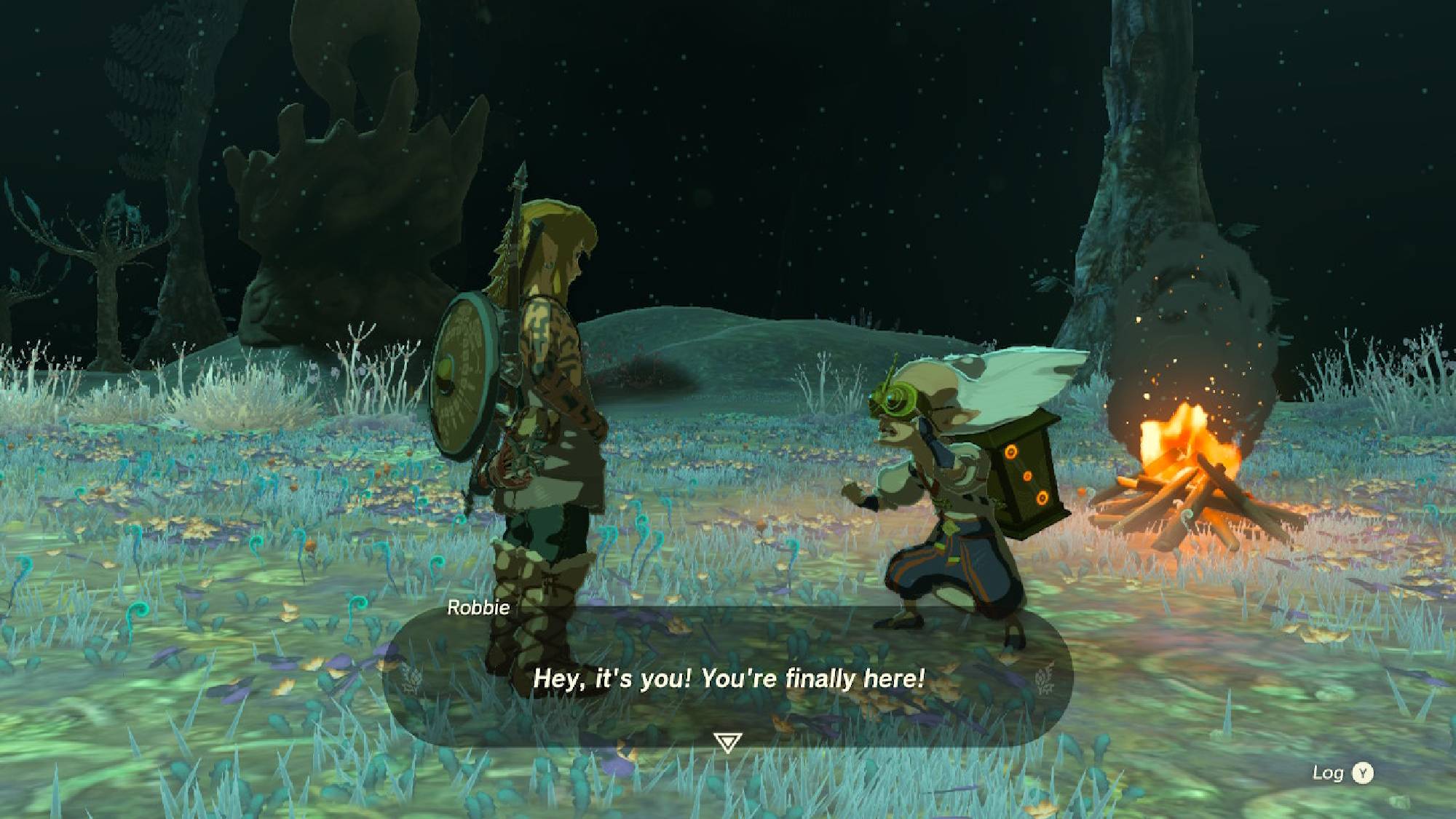
As with Breath of the Wild, you are left mostly to discover things on your own but you are given four map marks to follow so you don’t get lost. Head off to investigate these “Regional Phenomena” and you’ll uncover the game’s most meaty quest lines and advance the main story via flashbacks that focus on Zelda. It’s also here that you’ll come across the game’s quartet of elemental temples. These are Tears of the Kingdom’s substitute for classic Zelda dungeons and a much-appreciated upgrade on Breath of the Wild’s Divine Beasts.
While these temples are not as intricate as long-time fans would probably like, they stitch together imaginative puzzles in engaging and often ingenious ways, something the Divine Beasts never really achieved. Plus, each one ends with an appropriately epic boss battle. These large-scale encounters aren’t particularly challenging to overcome but they boast plenty of visual spectacle. However, I do wish there weren’t only four templates. Each takes around an hour to complete, and I was left craving more.
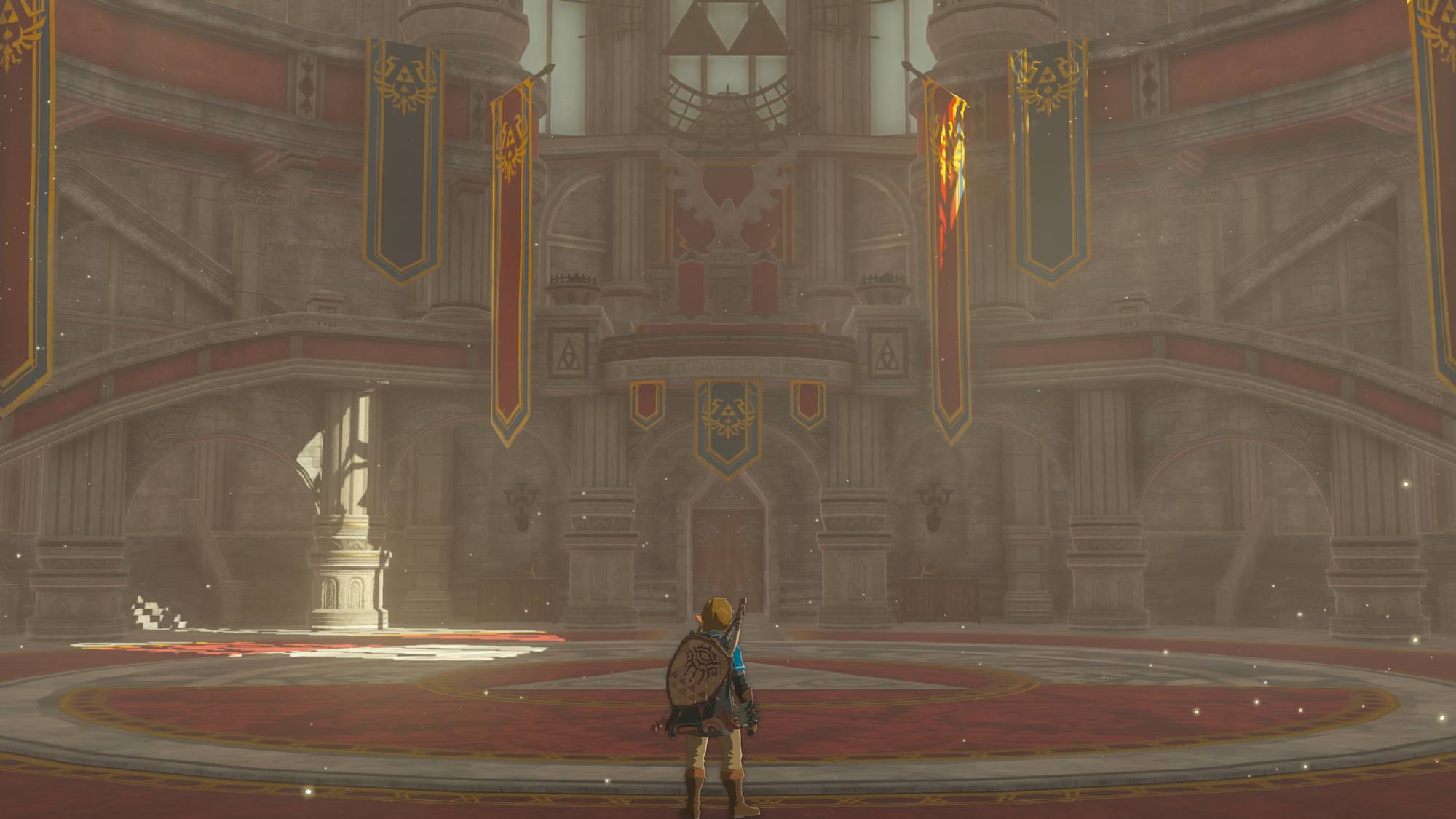
The main questline culminates in a suitably bombastic finale, and while I’ll tread lightly to avoid major spoilers, I will say the climactic showdown with Ganondorf is certainly worthy of concluding an adventure as grand as this one. It’s a real testament to Tears of the Kingdom's remarkable quality that even after more than 75 hours of play, it was able to genuinely surprise me in its final moments.
Hardware headaches
Tears of the Kingdom is often a very pretty game. The cartoonish visual style first deployed in Breath of the Wild has aged wonderfully, and once again impresses. This sequel is certainly capable of gorgeous moments: stand on the edge of a Sky Island or scale a tall mountain and you’ll be greeted with a vista that will have you reaching for the Switch’s capture button.
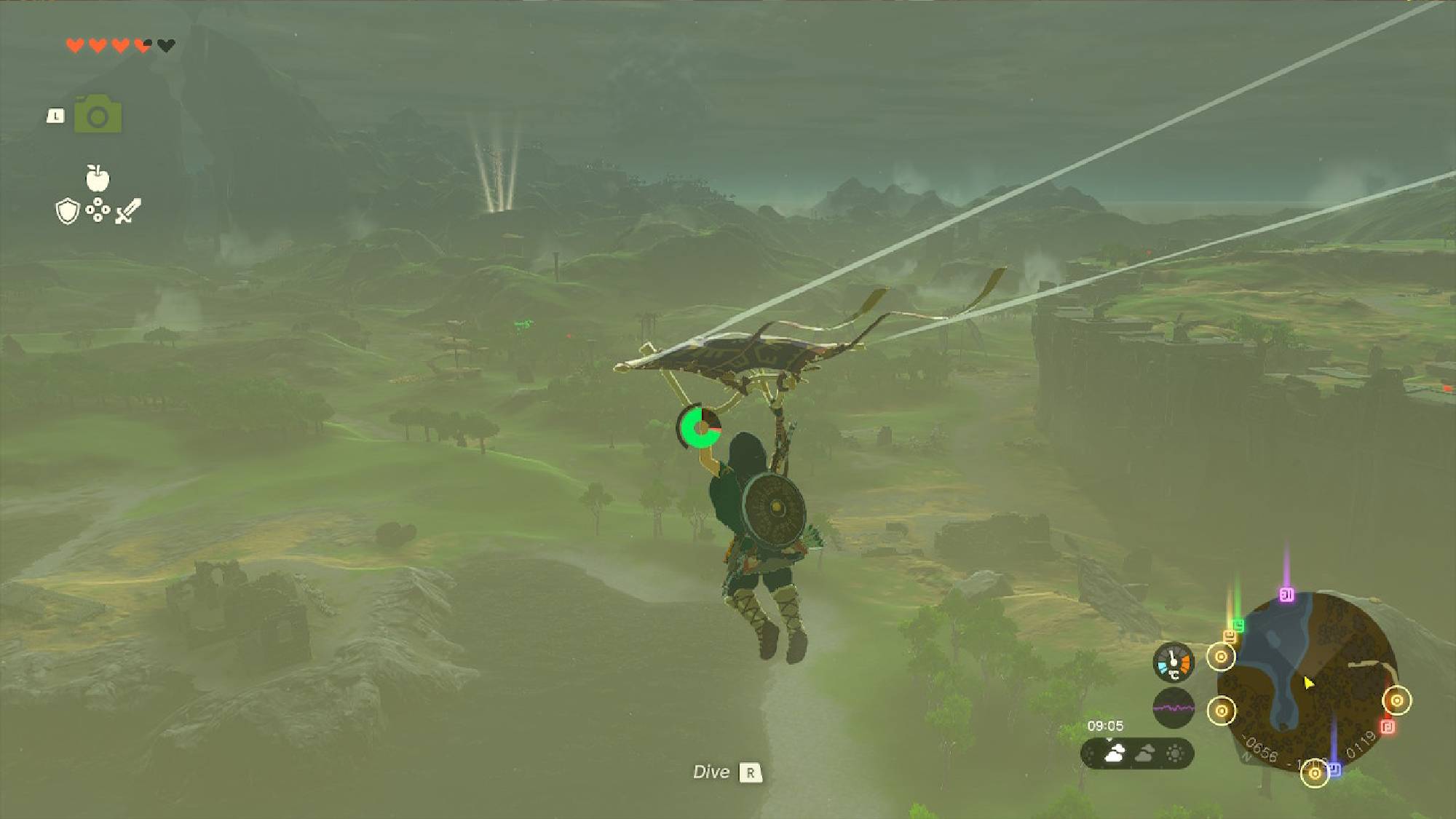
Some locations will have you wondering how Nintendo managed to cram all this onto a portable console that’s less powerful than a PS4. However, it’s often clear that Tears of the Kingdom is pushing the Nintendo Switch to its limits. And on a few too many occasions it nudges beyond them.
Framerate hiccups were a persistent problem throughout my playthrough. Densely packed areas like woods were the main offenders, similar to the Korok Forest in BotW. I also had what could have been a memorable surprise spoiled as the frame rate slowed to a crawl at the worst moment.

Textures can also be very blurry, and the noticeable jagged edges on far-away objects are unpleasant. It’s certainly impressive that Nintendo has managed to fit such a vast, systems-heavy game onto six-year-old handheld hardware, but the need for a more powerful console has been apparent for a while now; Tears of the Kingdom all but makes the case for a Switch sequel.
Zelda: Tears of the Kingdom review: Verdict
In our Breath of the Wild review, we called the 2017 release a “once-in-a-generation kind of game.” Clearly, Nintendo took that as a challenge.
With Tears of the Kingdom, it struck gold a second time on the same console. Tears of the Kingdom takes what was great about its predecessor and extrapolates it further, not just adding content but new abilities and distinct areas that make the game feel fresh.
In some ways BotW felt like a first draft for Tears of the Kingdom, paving the way for an engrossing experience that’s never anything short of a masterpiece. And The Legend of Zelda: Tears of the Kingdom thoroughly earns that hyperbolic label.
By surpassing what came before it, The Legend of Zelda: Tears of the Kingdom sets not just a new high bar for Nintendo games, but other open-world titles. The influence of Tears of the Kingdom will be felt for years to come.

Rory is a Senior Entertainment Editor at Tom’s Guide based in the UK. He covers a wide range of topics but with a particular focus on gaming and streaming. When he’s not reviewing the latest games, searching for hidden gems on Netflix, or writing hot takes on new gaming hardware, TV shows and movies, he can be found attending music festivals and getting far too emotionally invested in his favorite football team.
